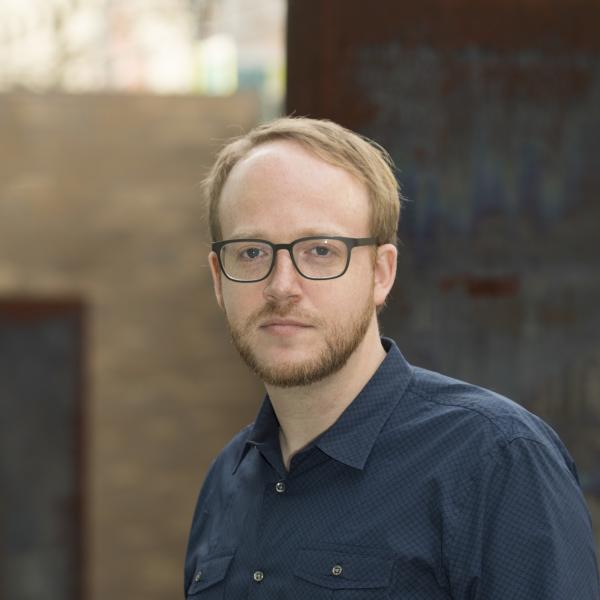Biography
I am an art historian and curator whose practice engages with the history of photography, environmental toxicology, and the intersections of art and science. My projects and collaborations of late have focused on themes of environmental aesthetics, pollution, and public health in the late nineteenth century and the postwar decades. Where photography is concerned, I am particularly interested in how lens-based technologies continue to reshape how people perceive and interact with the natural world.
I earned a PhD in Art History from the University of Chicago in 2018. Prior to joining MAPH, I taught in art history and museum studies programs at the University of Chicago, Rhode Island School of Design, and Western Colorado University. I also have over fifteen years of experience working for fine art museums and cultural heritage institutions, including the Art Institute of Chicago, Yale University Art Gallery, the Smart Museum of Art, the Madison Museum of Contemporary Art, the Wisconsin Historical Society, and Villa Albertine. I am also a co-editor of The Art Institute of Chicago Field Guide to Photography and Media (2023).
Current MAPH Courses
Approaches to Art History (Winter 2026)
(ARTH 39800)
This seminar examines a range of methods for doing the work of art history with an eye toward strengthening your own original contributions to the field. Through close reading and discussion of recently published scholarship, we will interrogate how a range of scholars generate novel ways of seeing and understanding the objects that they study. Our methodological investigations will be structured around the notion of scale, starting from macro concerns like canons and empires while gradually zooming in to consider environments and institutions, audiences and artists, individual artworks, and ultimately fragments thereof. As we move through these stages, we will consider the production, circulation, display, and reception of art objects through a variety of interpretive traditions including social history, critical theory, material culture, phenomenology, feminism and queer theory, and post- and decolonial thought.
Some of our guiding questions will be: How does thinking at different scales help us interrogate objects and the multiple histories that shape them? Can these approaches help us rethink, modify, or dismantle canonical patterns of the field? And how do they enable us to reappraise issues of exchange, power, and purpose in our own scholarship? Students need not identify as art historians to enroll in this seminar—it will be helpful for all students who want to think deeply about their approaches to visual and material objects, whether still or moving images, sculpture, or performance, particularly if those objects feel genre-bending, difficult to theorize, or recalcitrant. This course registration is by consent only.
Photography, Literature, and the Archive (Spring 2026)
(ARTH 25713/ARTH 35713)
This course, co-taught between English and Art History, considers the fertile cross-pollination between photography and literature in the United States from the late nineteenth century through the present. Tracing the reciprocal influence of text and image-based practices, we will look to photographs in social documentary tradition as a creative foundation for works of prose, poetry, and fiction, while also analyzing the integration of these literary modes into visual media like photobooks and exhibitions. Using archival theories as a critical frame, we will consider photographs as a basis for historical knowledge, as well as sites of creative intervention and revision. The aim of our comparative investigations will be to develop an interdisciplinary toolkit and critical vocabulary to bridge literature, art history, and cultural studies. The course will include multiple visits to museums and campus archives. This course registration is by consent only. Fulfills the following categories in the ARTH major and minor: European and American, modern (post-1800), Theory and Historiography. Co-taught with MAPH Preceptor Megan Tusler.

